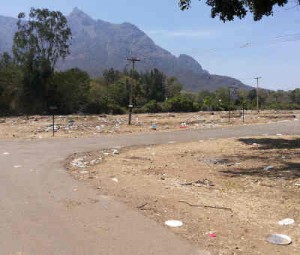The emerging concept of junk

The remnant of nature at its best
I searched on the Internet for a “resort” in this region, and a travellers’ website caught my eye with its assessments. I opened the page, expecting sadistically to see abysmal evaluations on a “resort” I know. Darn, the resort (without quotes this time, because I developed some respect), got very good reviews mostly, with “nature at its best” form of literary appreciation.
I must be coming from another planet and a bit of soul searching was necessary at this point, which carried me twenty five years ago.
When I came to India, I saw in a newspaper the prize winning drawings of a painting competition for school children: “nature at its best”. Most drawings represented two hills, with a sun rising, probably inspired by the DMK’s (a political party) emblem. This was cute, it revealed lots of innocence, but I found it worrisome because all children had drawn what is ecologically a wasteland: ecosystems degraded to bare ground except for a few remaining trees.
Now, the resort I was looking at on the internet, is in the middle of heavily degraded forests where plastics are discarded wantonly by tourists, and plastic rubbish is everywhere. The resort has bonfires for tourists from wood harvested illegally from the Reserved Forest. It has dug bore wells without permission. It has destroyed most of the trees on its land (and surrounding lands) and it represents a hotspot for invasive plant species. The “waste management” is a pit. Tourists flash powerful spot lights at night. The constant noise coming from the village loudspeakers was of no concern for the proponents of the oneness with nature. Does this deserves “excellent” and “very good” in the hospitality industry?
The medical profession is in the same pit as ecologists. Two or three generations earlier, the normal person weighted say, 60 kg (I did not check, so don’t start a diet on this). Today, the normal person weighs around 65 kg, for example. The problem is that our reference point has shifted due to the obesity epidemic. Same for the environment. It is so degraded that anything remotely green looks pristine, in the same way an overweight person will seem to be in good health compared to an obese person. But in absolute terms, our natural ecosystems have been mostly destroyed. Alarm bells are ringing internationally on the state of our planet.
The least we know, the more we are likely to reach a wrong conclusion. I personally won’t be so sure about the “nature at its best” thing.
Jean-Philippe Puyravaud



